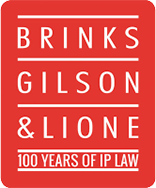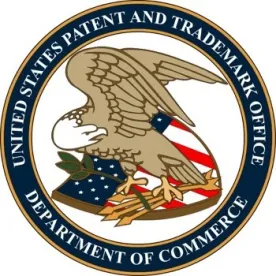On May 9, 2018, the United States Patent and Trademark Office (“USPTO”) issued a notice of proposed rulemaking in which it proposed – for inter partes proceedings before the Patent Trial and Appeal Board (“PTAB”) involving unexpired patents – to adopt the same claim construction standard used in federal court and International Trade Commission (“ITC”) proceedings.[1] In particular, the proposed amendments to 37 C.F.R. Part 42 would implement two primary changes to inter partesreviews (“IPRs”), post grant reviews (“PGRs”), and covered business method reviews (“CBMs”):
- Replacing the broadest reasonable interpretation claim construction standard (the “BRI” standard)[2] with the standard used in civil actions to invalidate a patent under 35 U.S.C. § 282(b). In federal court and the ITC, this is currently known as the Phillips standard.[3] The construction of a claim term under the BRI standard may be the same as or broader than the construction of that term under the Phillips standard, but it cannot be narrower.[4]
- Requiring consideration by the PTAB of timely submitted prior claim construction determinations by a federal court or ITC. Note, however, that the proposed amendments do not require deference to prior claim construction determinations.
By normalizing its claim construction standards, the PTAB seeks to achieve several goals, including:
- Strengthening the patent system by improving uniformity between forums, which could lead to greater predictability of the patent grant and improve the efficacy of post-grant proceedings as cost-effective litigation alternatives.
- Improving the quality of individual PTAB claim construction determinations by drawing from the well-developed body of Phillips-related case law.
- Increasing overall judicial efficiency by making PTAB claim construction proceedings more relevant to civil actions. In its notice of proposed rulemaking, the USPTO highlighted one study’s finding that over 86% of patents subjected to PTAB trial proceedings were also litigated in another forum.
- Alleviating perceived unfairness by only requiring patent owners to defend claim scope that is commensurate with what they could assert. For example, under the current dual-standard regime, a patent owner can only assert claims construed under the potentially narrower Phillips standard, but might need to defend those claims before the PTAB against a potentially broader universe of prior art under the BRI standard.
In PTAB proceedings, the narrower Phillips standard would incrementally favor patent owners, as it theoretically allows a smaller universe of prior art than the BRI standard. If implemented, these amendments could lead to fewer instituted petitions, and fewer invalidated claims. On top of the broader estoppel implications of the recent SAS decision and the PTAB’s revised policy to issue final written decisions on all grounds, this proposed change could make IPRs, PGRs, and CBMs less appealing to district court defendants and ITC respondents. See SAS Institute, Inc. v. Iancu, No. 16-969, ___ U.S. ___ (2018).
However, the proposed amendments could potentially benefit defendants in district court. Assuming an early petition for IPR, PGR, or CBM, district court judges may be more likely to grant a stay if the PTAB issues claim construction determinations under Phillips early enough to simplify district court issues. Also, an early PTAB claim construction under Phillips could help defendants gauge the strength of their non-infringement and invalidity positions.
Although the USPTO’s proposed amendments strive to unify claim construction outcomes across forums, there would be lingering potential for disparate constructions. As noted above, although the PTAB would be required to consider timely-submitted prior claim constructions from district courts and the ITC, the proposed amendments do not require the PTAB to defer to those constructions. And currently, PTAB claim constructions do not bind district courts either, although issue preclusion may be more likely to apply if the proposed amendments become law. See SkyHawke Techs., LLC v. DECA Int’l Corp., 828 F.3d 1373, 1376 (Fed. Cir. 2016). Thus, despite the USPTO’s proposed amendments, inconsistent claim constructions could persist.
The USPTO’s proposed amendments pose some final questions:
- What is the endgame? If the USPTO removes the key distinction between PTAB and district court claim constructions, could the law evolve further such that district courts become bound by PTAB claim construction proceedings? Does this signal that the USPTO may some day consider applying the Phillips standard during examination?
- How will PTAB procedure evolve to accommodate Phillips? Currently, PTAB trial procedure allows petitioners and patent owners to advocate claim constructions in the petition and patent owner’s preliminary response, respectively. Patent Trial Practice Guide, 77 Fed. Reg. 48,756, 48,763-48,764 (Aug. 14, 2012). Subsequently, the PTAB issues its institution decision. Id. at 48,765. If the PTAB institutes the trial, then the parties may again address claim construction issues in the patent owner’s opposition and the petitioner’s reply, and at oral hearing. Id. at 48,766, 48,768. However, PTAB procedure does not currently provide for dedicated claim construction briefing or a Markman-like hearing. For this reason, PTAB trial procedures may need to evolve to accommodate additional intrinsic and extrinsic evidentiary support, especially if those claim constructions have heightened relevance to district court and ITC proceedings. As noted below, the USPTO has experience applying Phillips to expired patent claims. Also, it is already common practice to provide intrinsic and extrinsic evidence to support constructions under the BRI standard.
- What if a prior claim construction determination does not include one party to the IPR? The proposed amendments would require the PTAB to consider timely submitted claim construction determinations decided by district courts or the ITC under Phillips even if those prior determinations did not involve the petitioner or (current) patent owner. Although earlier claim constructions could be positive or negative for either party, this feature appears more likely to disadvantage the petitioner, who may need to address the relevance of prior claim construction determinations even though it did not participate in those proceedings.
- How would this affect pending post grant proceedings? Although the notice of proposed rulemaking states that the proposed amendments would apply to pending IPR, PGR, and CBM proceedings, it is unclear exactly how the PTAB would treat pending post grant proceedings. For example, if the PTAB institutes a petition based upon BRI claim constructions, would it issue a revised institution decision? Would it invite parties to provide additional claim construction briefing? These questions could affect a significant number of proceedings given that approximately 1,500 petitions were pending before the PTAB as of February 28, 2018, according to the most recent available statistics.[5]
- Will it increase or accelerate costs? The USPTO states that the rulemaking is not economically significant and would not significantly affect a substantial number of small entities. In scenarios where a patent is simultaneously subject to PTAB, district court, and/or ITC proceedings, parties could benefit insofar as it would no longer be necessary to construe claims under two standards. However, the potentially heightened focus on claim construction before the PTAB could increase (or accelerate) costs of IPRs, PGRs, and CBMs for some parties.
The USPTO’s proposed changes to 37 C.F.R. Part 42 appear to favor patent owners, yet could work to the advantage of petitioners in less obvious ways. The USPTO invites formal comments on its proposed amendments by July 9, 2018.
[1] In Cuozzo Speed Techs., LLC v. Lee, the Supreme Court confirmed that Congress delegated authority to the USPTO to choose the claim construction standard it employs for inter partes reviews. 136 S. Ct. 2121, 2142-2146 (2016).
[2] Under the BRI standard, claims are given their “broadest reasonable construction in light of the specification of the patent in which it appears.” 37 C.F.R. §§ 42.100(b), 42.200(b), 42.300(b). As noted by the Cuozzo majority, the USPTO has employed the BRI standard during examination for more than 100 years. 136 S. Ct. at 2145. According to the USPTO, “An essential purpose of the broadest reasonable claim interpretation standard in the amendment process is to encourage a patent owner to fashion clear, unambiguous claims. Only through the use of the broadest reasonable claim interpretation standard can the Office ensure that uncertainties of claim scope are removed or clarified.” Patent Trial Practice Guide, 77 Fed. Reg. 48,756, 48,764 (Aug. 14, 2012).
[3] Under the Phillips standard, claims are generally given their ordinary and customary meaning as understood by a person of ordinary skill in the art in view of the specification and prosecution history. Phillips v. AWH Corp., 415 F.3d 1303, 1312-1318 (Fed. Cir. 2005). Extrinsic evidence, including dictionaries and treatises, may be relied upon to determine a claim’s meaning; however, extrinsic evidence is “less significant than the intrinsic record.” Id. at 1317. We note that the PTAB already applies Phillips to construe the claims of expired patents, for example in ex parte reexaminations. See, e.g., In re CSB-System Int’l, Inc., 832 F.3d 1335 (Fed. Cir. 2016).
[4] Facebook, Inc. v. Pragmatus AV, LLC, 582 F. App'x 864, 869 (Fed. Cir. 2014)
[5] See Trial Statistics – IPR, PGR, CBM, Patent Trial and Appeal Board, February 2018, page 11, https://www.uspto.gov/sites/




 />i
/>i

